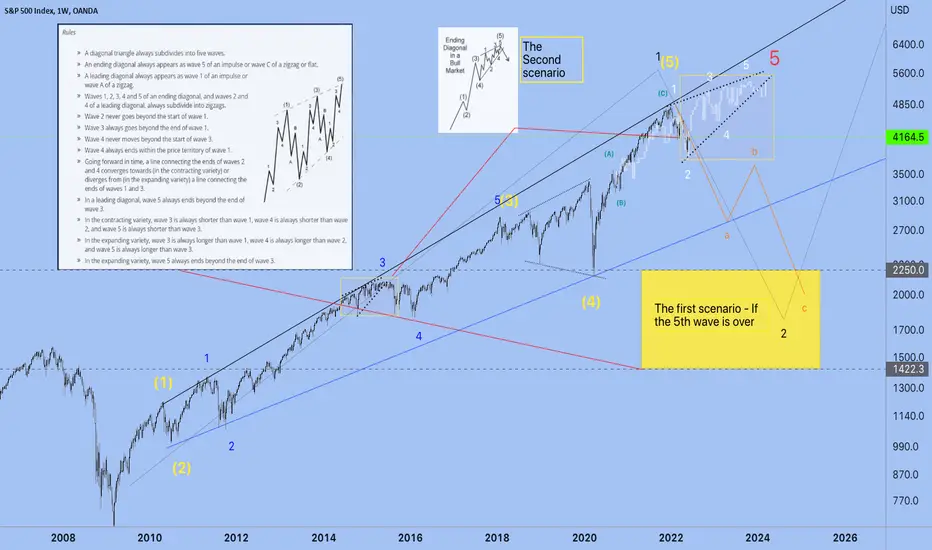More theory
A diagonal triangle is always subdivided into five waves.
An ending diagonal always appears as wave 5 of an impulse or wave C of a zigzag or flat.
A leading diagonal always appears as wave 1 of an impulse or wave A of a zigzag.
Waves 1, 2, 3, 4, and 5 of an ending diagonal, and waves 2 and 4 of a leading diagonal, always subdivide into zigzags.
Wave 2 never goes beyond the start of wave 1.
Wave 3 always goes beyond the end of wave 1.
Wave 4 never moves beyond the start of wave 3.
Wave 4 always ends within the price territory of wave 1.
Going forward in time, a line connecting the ends of waves 2 and 4 converges towards (in the contracting variety) or diverges from (in the expanding variety) a line connecting the ends of waves 1 and 3.
In a leading diagonal, wave 5 always ends beyond the end of wave 3.
In the contracting variety, wave 3 is always shorter than wave 1, wave 4 is always shorter than wave 2, and wave 5 is always shorter than wave 3.
In the expanding variety, wave 3 is always longer than wave 1, wave 4 is always longer than wave 2, and wave 5 is always longer than wave 3.
In the expanding variety, wave 5 always ends beyond the end of wave 3.
Best regards EXCAVO
tinyurl.com/EXCAVOVIP
1.3 Million $ Tournament - Join to EXCAVO team weex.com/en/register?vipCode=excavo
All info
excavo.carrd.co/
TG
t.me/EXCAVOACADEMY
t.me/excavochannel
1.3 Million $ Tournament - Join to EXCAVO team weex.com/en/register?vipCode=excavo
All info
excavo.carrd.co/
TG
t.me/EXCAVOACADEMY
t.me/excavochannel
Related publications
Disclaimer
The information and publications are not meant to be, and do not constitute, financial, investment, trading, or other types of advice or recommendations supplied or endorsed by TradingView. Read more in the Terms of Use.
tinyurl.com/EXCAVOVIP
1.3 Million $ Tournament - Join to EXCAVO team weex.com/en/register?vipCode=excavo
All info
excavo.carrd.co/
TG
t.me/EXCAVOACADEMY
t.me/excavochannel
1.3 Million $ Tournament - Join to EXCAVO team weex.com/en/register?vipCode=excavo
All info
excavo.carrd.co/
TG
t.me/EXCAVOACADEMY
t.me/excavochannel
Related publications
Disclaimer
The information and publications are not meant to be, and do not constitute, financial, investment, trading, or other types of advice or recommendations supplied or endorsed by TradingView. Read more in the Terms of Use.

